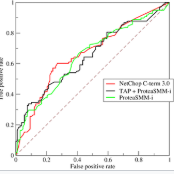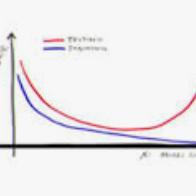We introduce the notion of heterogeneous calibration that applies a post-hoc model-agnostic transformation to model outputs for improving AUC performance on binary classification tasks. We consider overconfident models, whose performance is significantly better on training vs test data and give intuition onto why they might under-utilize moderately effective simple patterns in the data. We refer to these simple patterns as heterogeneous partitions of the feature space and show theoretically that perfectly calibrating each partition separately optimizes AUC. This gives a general paradigm of heterogeneous calibration as a post-hoc procedure by which heterogeneous partitions of the feature space are identified through tree-based algorithms and post-hoc calibration techniques are applied to each partition to improve AUC. While the theoretical optimality of this framework holds for any model, we focus on deep neural networks (DNNs) and test the simplest instantiation of this paradigm on a variety of open-source datasets. Experiments demonstrate the effectiveness of this framework and the future potential for applying higher-performing partitioning schemes along with more effective calibration techniques.
翻译:我们引入了应用热后模型-不可知变异的多元校准概念,用于模型输出,以改进非加太在二进制分类任务中的性能。我们考虑过分自信模型,这些模型在培训与测试数据方面表现得明显更好,并直觉了解为什么它们可能未充分利用数据中中中中度有效的简单模式。我们将这些简单模式称为地物空间的多元分割,并在理论上表明,每个分区的校准都完全一致地分别优化了ACUC。这提供了一个多元校准的一般范例,作为后热程序,通过基于树的算法和后热校准技术对每个分区进行分解,从而确定地物空间的多元分区,从而改进ACC。尽管这一框架的理论最佳性适用于任何模型,但我们侧重于深层神经网络(DNN),并测试这一模式对各种开源数据集的简单即时的即解。实验表明这一框架的有效性,以及今后在采用更有效的校准技术的同时适用更高性分区计划的可能性。



